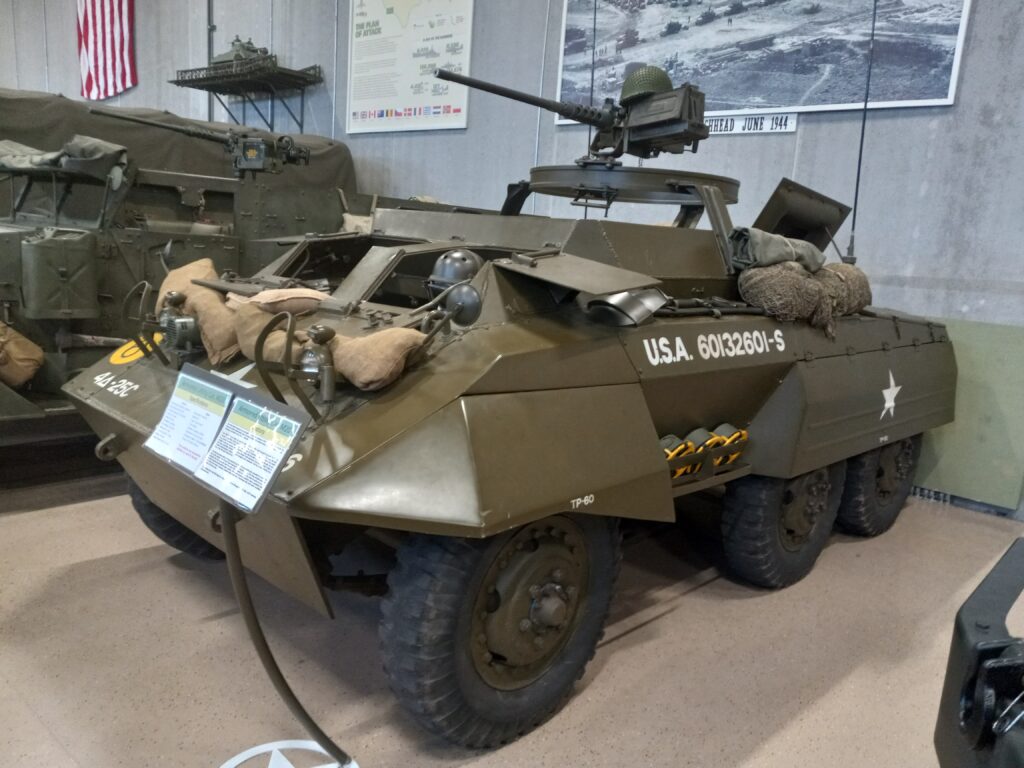M20 Armored Utility Car

General:
Manufacturer: Ford Motor Company
Years produced: 1943-1945
Quantity produced: 3,791 vehicles
Length: 197 inches
Width: 100 inches
Net weight: 12,800 lbs.
Gross weight: 16,650 lbs.
Fuel capacity: 56 gal
Fuel consumption: 6mpg
Range: 350 miles
Max allowed speed: 55 mph
Engine:
Manufacturer: Hercules
Model: JXD
Type: L-head, 4-cycle
Fuel: Gasoline
Number of cylinder: 6 (in-line)
Displacement: 320 cu. in. (5.25L)
Horsepower: 110hp at 3,200 rpm
Torque: 220 lb. ft. at 1,150 rpm
The first fully Armored Car was built on a Cadillac chassis in 1914. Ever since that time the U.S. Army has been developing ways to better protect the soldiers inside the car and improving performance to better carry out the mission.
The M20 Armored Utility Car and its older brother, the M8 Light Armored Car, both trace their lineage to the M3A1 Scout Car. As the Scout Car was the main cavalry vehicle used, the military wanted to outfit it with a 37mm anti-tank gun for improved capabilities. Due to the added weight of the gun, mount, and ammunition, along with the high silhouette of the gun, the project was cancelled. However, the newly formed Tank Destroyer Command wanted a light armored reconnaissance vehicle, so more designs were evaluated. This led to the eventual creation of the M8 Light Armored Car.
The M8 was armed with a 37 mm anti-tank gun and .50 cal machine gun, mounted in a turret on top of the vehicle. The M8 met Tank Destroyer’s Commands desires, but they wanted two new vehicles. One that could be used as a armored command car, and the other to serve as an armored personnel-ammunition-cargo carrier. These two proposed vehicles were combined into one when Ford Motor Company realized they could use a turret-less M8, with other modifications, to fit both roles.
The production of the M20 began in July of 1943, and ran through June of 1945. 3,791 vehicles had been built.